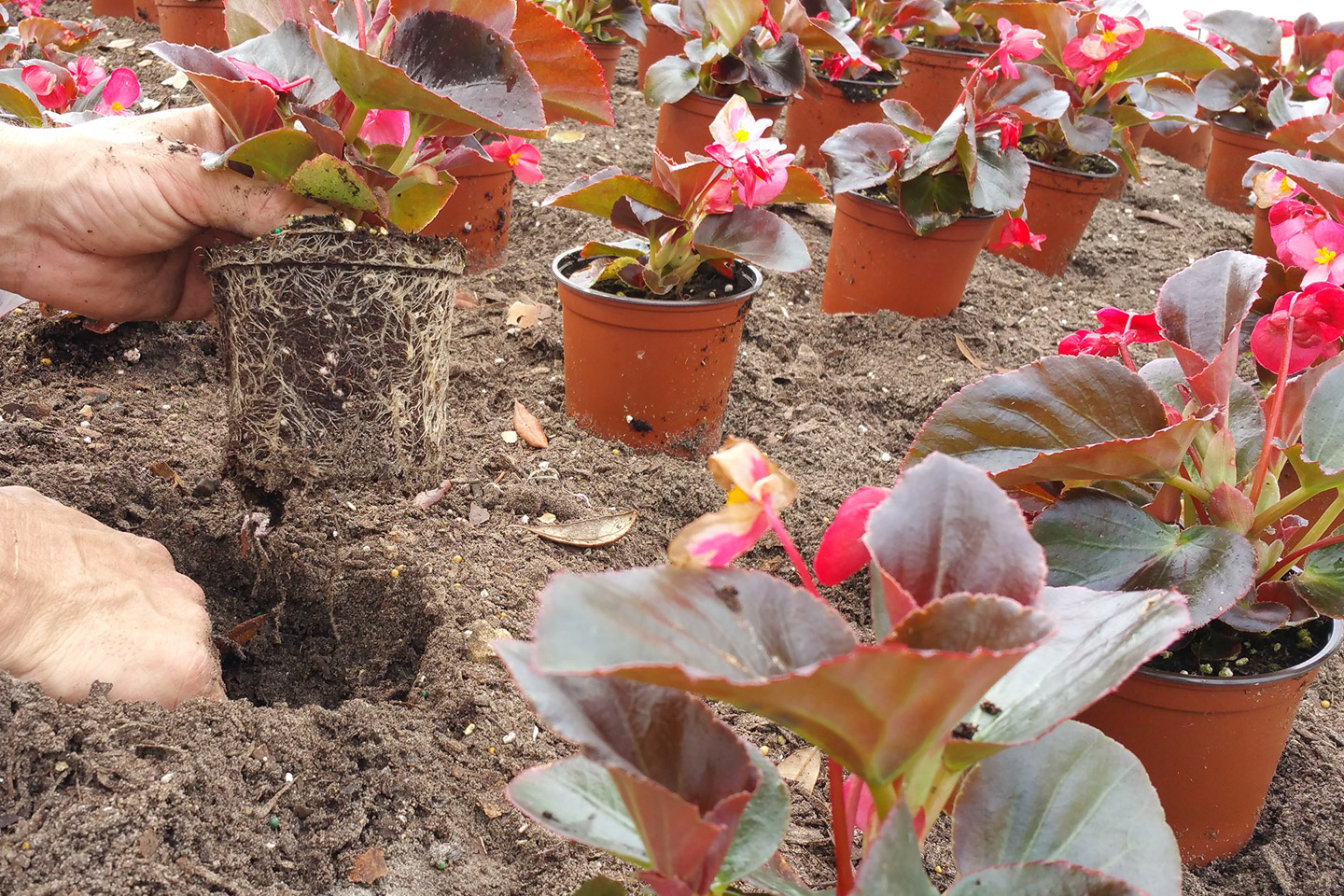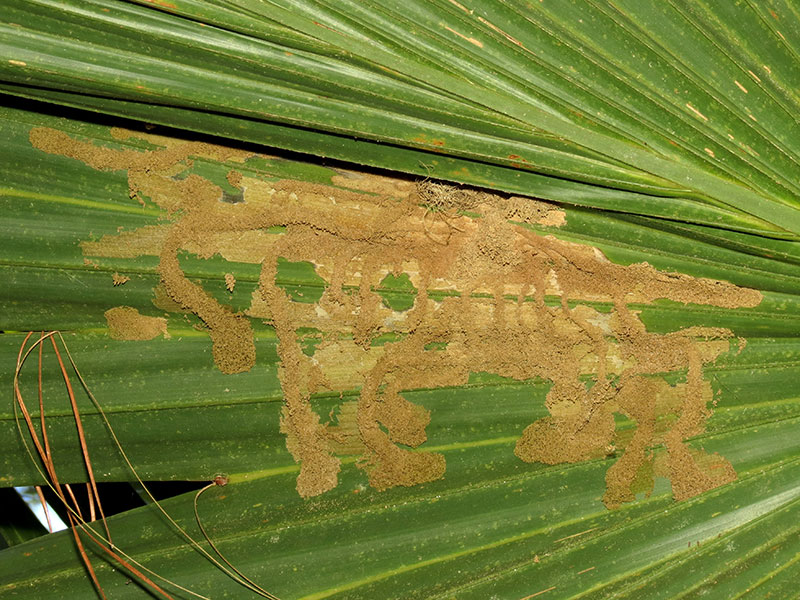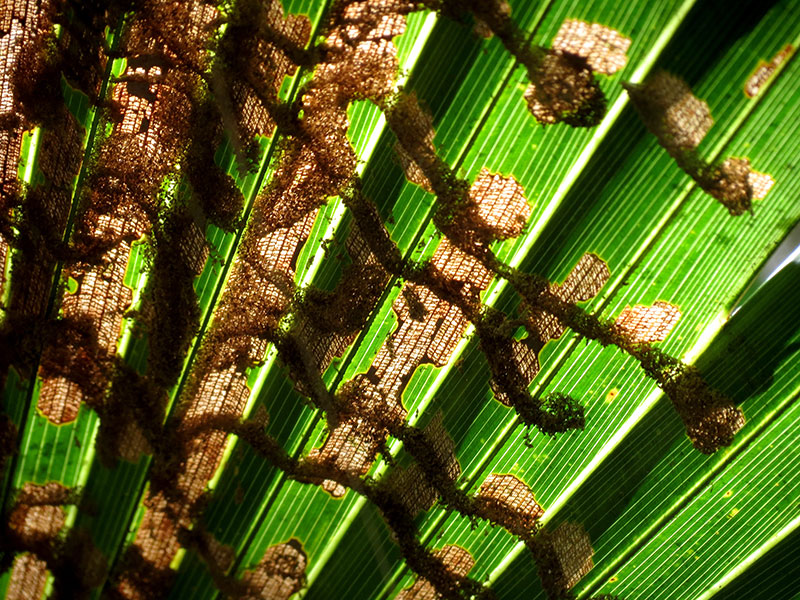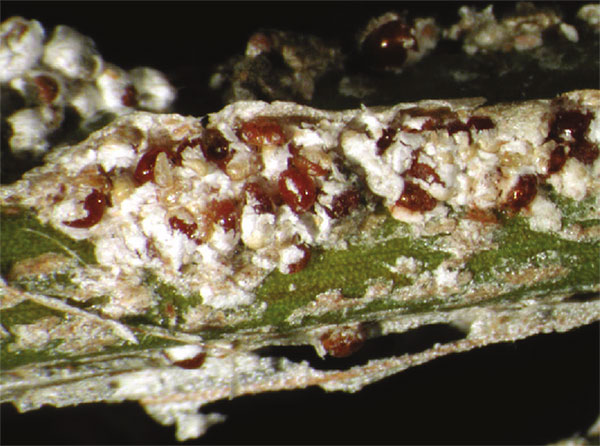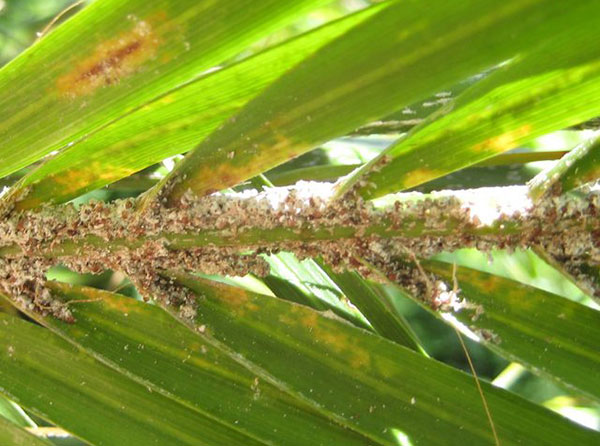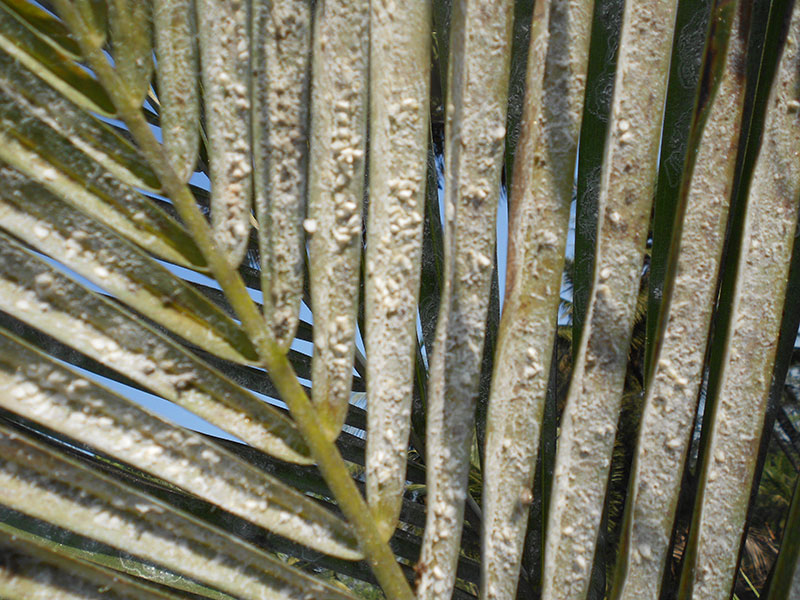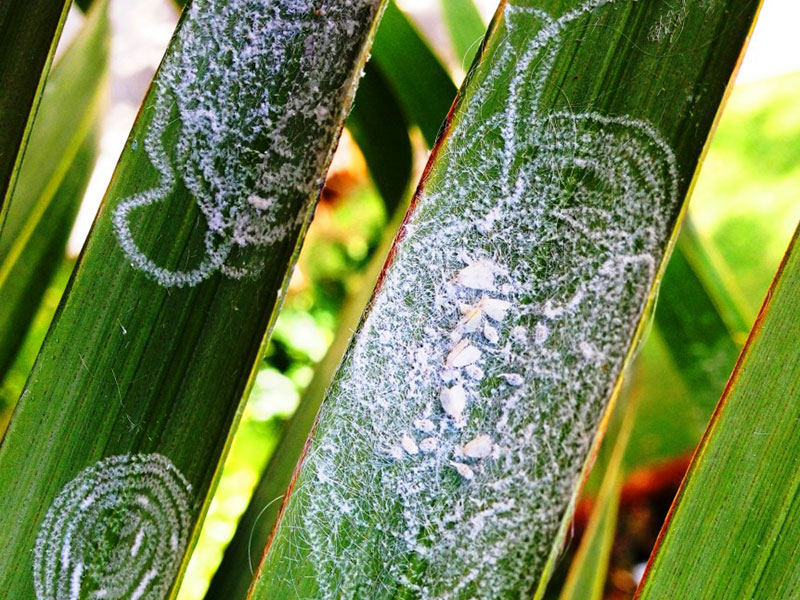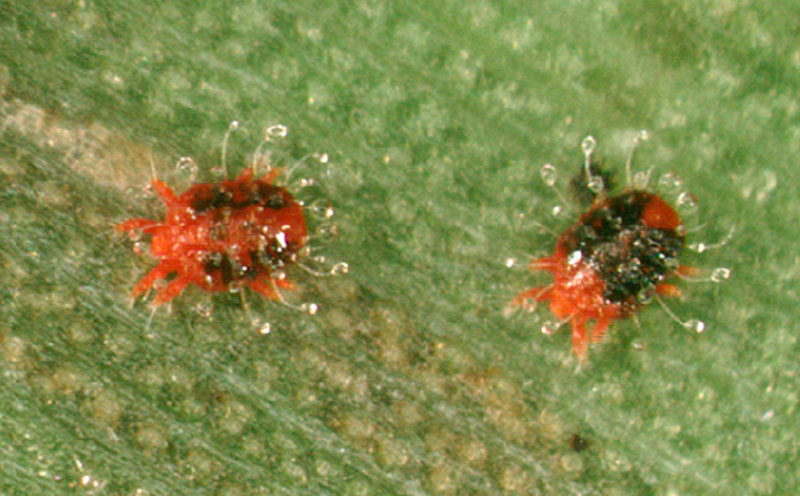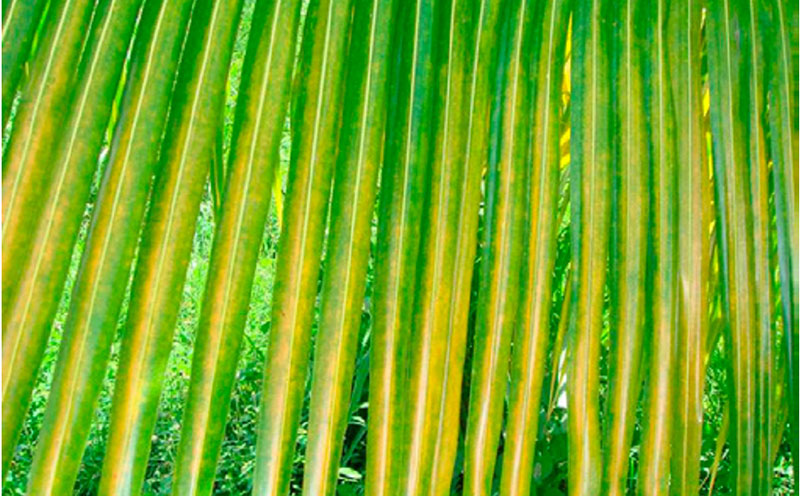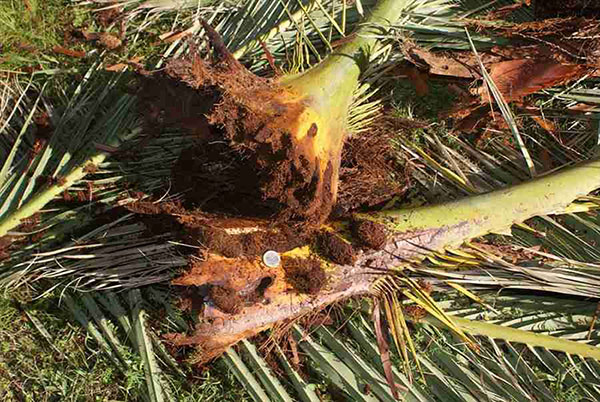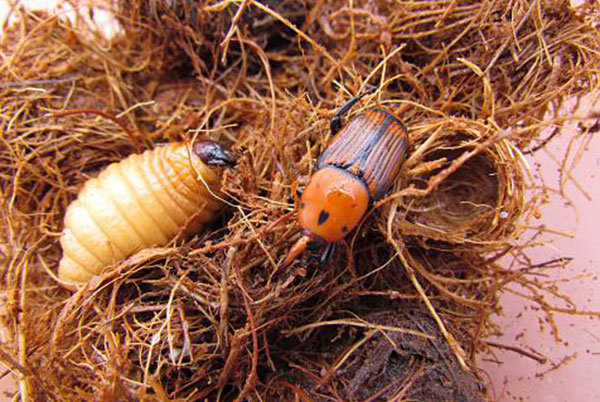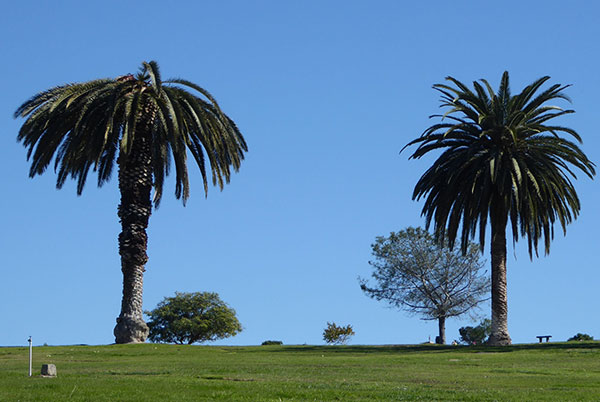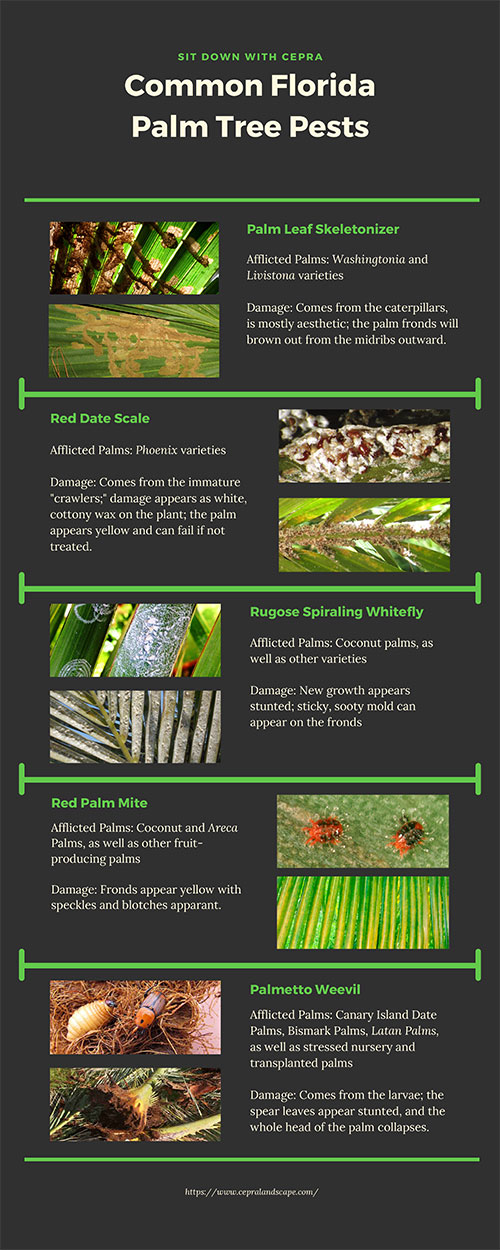What's Damaging Your Landscape? Part 3: Palm Pests - Sit Down with CEPRA
Palm Pests
Palms attract interest whether viewed from below, lit at night, silhouetted against the sky, or reflected in water. Though their foliage color, texture, symmetry and varied sizes, palms provide an essential element to a diversity of landscapes. They excel as dramatic punctuation marks in the landscape, as a single fine specimen or multitrunked cluster creating sculptural focal points. Their oversize leaves make soothing sounds in the wind and their extreme flexibility makes them one of the few plants able to stand up to tropical storms. Just as palms have a plethora of diversity among the species, the insect pests that affect palms in our landscape also come in many colors, shapes, and sizes. Each pest brings with it, differences in its life cycle that can cause damaging results.
Palm Leaf Skeletonizer - This pest is native to Florida. The caterpillar stage is the most damaging of the Skeletonizers life cycle. The caterpillar consumes the palm leaf surface leaving behind the bare bones of veins and midribs. It feeds as an individual or in groups under the protection of woven silken tubes mixed with frass. Fan palms such as the Washintonia and Livistona are the preferred hosts. Symptoms typically appear on mid-canopy to older leaves. The damage mainly caused by palm leaf Skeletonizer is aesthetic causing the palm frond to brown out. Healthy palms can survive the damage. Management methods includes removal of the affected foliage and native beneficial insect parasitoids.
Red Date Scale - The host for red date scale is usually in the genus Phoenix as it is named after its preferred host, the date palm. Adult females are roughly 1/25 to 1/16 inch in length, red to reddish-brown color and may be found embedded in a mass of white cottony wax on plant tissue. The immature stage 'crawlers' actively move and freely feed by inserting their needle-like mouthparts into the host plant. The palms leaves, stems, trunk, fruits, and as well as exposed and underground roots may also be infested. Once feeding begins, layers of white wax are secreted and cover the scales body. Damage occurs by the insects ability to disrupt normal plant metabolic functions. Palm death may result from heavy infestations. Scale insects are commonly attacked by predators, parasites and diseases which can help manage this pests populations.
Rugose Spiraling Whitefly - This pest is a fairly new species in Florida and was first identified in Miami-Dade County in 2009. Rugose spiraling whitefly adults are about three times larger than the commonly found whiteflies. They can be easily identified by the presence of a pair of irregular light brown bands across the insect's wings. Rugose spiraling whitefly feeds on a wide range of host plants including palms, woody ornamentals, and fruits. Of all the palms its favorite host plant is the Coconut palm. Females lay eggs on the underside of leaves in a spiral pattern and cover them with white waxy material. Adult females sometimes will lay their eggs on non-plant surfaces such as cars, windows, and walls. Rugose spiraling whitefly will cause stress by using its needle-like mouth parts to remove nutrients and water from the host plant. Infestation of this pest usually does not kill the host plant, but it can interfere with normal growth. The Rugose spiraling whitefly excretes a sticky, glistening liquid substance (honeydew), which provides an excellent resource for the growth of sooty mold. Once it dries, the sooty mold forms thick layers on the host leaves and other non-plant surfaces. These layers of sooty mold can disrupt the photosynthesis process in palm leading to physiological disorders. The honeydew also attracts ants and wasps that protect the whiteflies from their natural enemies.
Red Palm Mite - In 2007, the red palm mite was discovered in Florida. This mite is easily distributed by the wind, discarded foliage, and the movement of infested plants through nursery stock. The red palm mite is a pest of several ornamental and fruit-producing palm species such as coconut and areca palms. The mite is oval-shaped and reddish in color. The pest uses its stylet-like mouthparts, that are used for piercing plant tissues to remove the palms cell contents. It typically feeds on the lower surface of the leaves. Damage symptoms can range from yellow speckles and blotches on the leaves to a yellowish discoloration of the entire leaflet. With severe infestations complete yellowing of the leaves can occur.
Palmetto Weevil - The palmetto weevil is native to Florida and is the largest weevil in North America. Weevils are a family of beetle that have mandibles which are used for feeding and to prepare holes in host palms for their eggs. These eggs are laid at the base of leaves or within wounds of the host palm. Adults weevils vary in color from solid black to almost completely red with a variable black pattern. Their prominent heads have large mandibles, are dark brown and very hard. The larvae, or grubs, are legless and creamy to yellowish in color. Their size can also be quite variable. The weevil is known to be a pest of stressed nursery and transplanted palms as well as healthy Canary Island Date, Bismarck and Latan palms. Damage occurs to the host plant by the feeding of the larva. As they molt the larvae's appetite increases. Adult activity is usually more noticeable in the late spring and early summer months. They tend to feed primarily in the soft tissue surrounding the bud from which the primary growth of the palm occurs. Early detection of weevil infestation is difficult, and treatment even in the early stages of infestation may be too late to save the palm. The symptoms of a palmetto weevil infestation vary, but commonly involve a general, often irreversible decline of the spear leaf and younger leaves. The older foliage then leaves becomes affected, begins to droop as the whole head of the palm collapses.
Conclusion
As palms are a great point of interest in the landscape, their care is considered a specialty. The pests that affect these specimen can devastate all the palms in the area - if they are not identified and treated early on. Below is a handy guide to help you as you care for your landscape.
We hope you have enjoyed our segment on common pests in the Florida landscape. Please join us for the next segment of our four-part series, where we will be highlighting ornamental shrub pests.
Part 1: Turf Grass Pests | Part 2: Tree Pests | Part 3: Palm Pests | Part 4: Ornamental Shrub Pests
